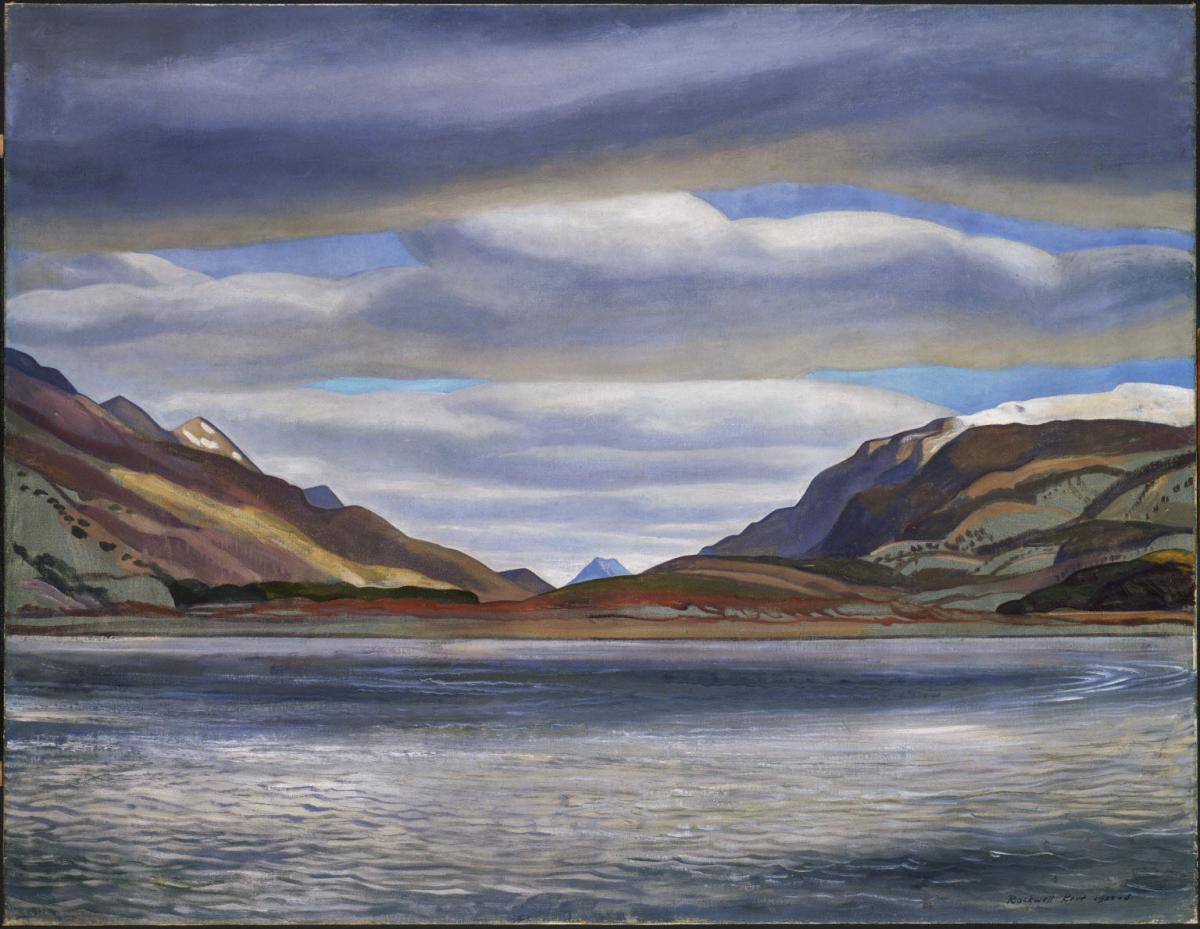Azopardo River
Rockwell Kent ( 1922 )

Powered by ideas of Christian socialism that valued poverty and hard work, Rockwell Kent found artistic inspiration in harsh and remote locations across the globe, from the rugged terrain of Monhegan Island, off the coast of Maine, to Tierra del Fuego, Chile. Acknowledged by critics as a direct inheritor of Winslow Homer’s heroic realism, Kent’s paintings often explore the theme of man’s relative insignificance in relationship to the monumental forces of nature.
Kent’s later style, evident in Azopardo River, one of his Tierra del Fuego landscapes, emphasizes nature’s stark geometry by reducing the landscape, clouds, and open sky into hard-edged patterns of simplified shapes, contours, and cold colors that convey the harshness of the natural world. The rich impasto and surface texture of earlier works has now given way to a thin, sleek finish. The vastness of the valley and expansive sky emphasize nature’s power, which was typical of Kent’s later work. When asked why he travelled such distances to paint, Kent said, “To such the wisdom of St. Augustine replies: ‘And the people went there and admired the high mountains, the wide wastes of the sea and the mighty downward rushing streams, and the ocean, and the course of the stars, and forgot themselves.’ That [the Tierra del Fuego] paintings may convey to those who see them some of the elation of self-forgetfulness is all that they are meant to do.”